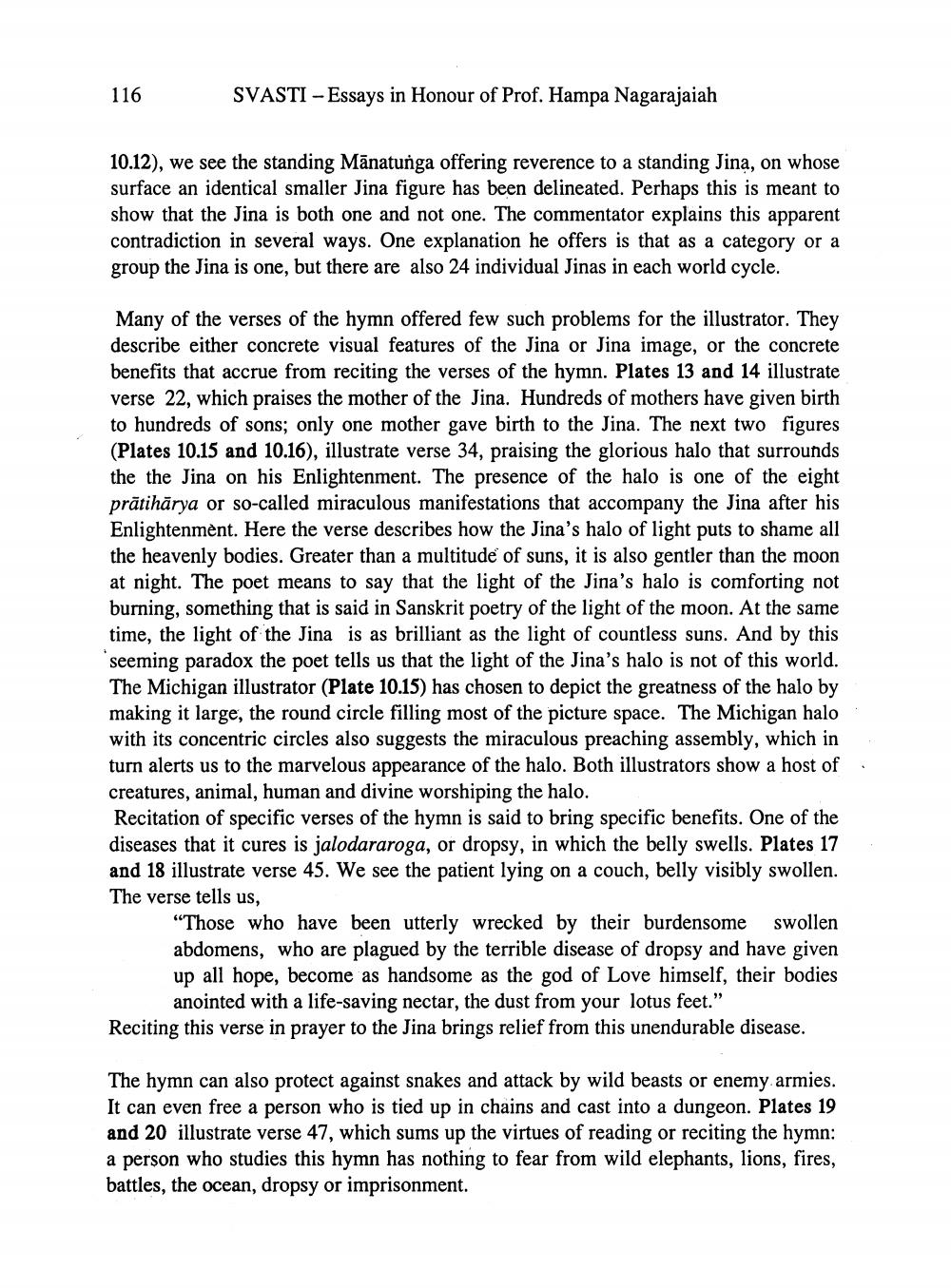________________
116
SVASTI - Essays in Honour of Prof. Hampa Nagarajaiah
10.12), we see the standing Mänatunga offering reverence to a standing Jiną, on whose surface an identical smaller Jina figure has been delineated. Perhaps this is meant to show that the Jina is both one and not one. The commentator explains this apparent contradiction in several ways. One explanation he offers is that as a category or a group the Jina is one, but there are also 24 individual Jinas in each world cycle.
Many of the verses of the hymn offered few such problems for the illustrator. They describe either concrete visual features of the Jina or Jina image, or the concrete benefits that accrue from reciting the verses of the hymn. Plates 13 and 14 illustrate verse 22, which praises the mother of the Jina. Hundreds of mothers have given birth to hundreds of sons; only one mother gave birth to the Jina. The next two figures (Plates 10.15 and 10.16), illustrate verse 34, praising the glorious halo that surrounds the the Jina on his Enlightenment. The presence of the halo is one of the eight prätihārya or so-called miraculous manifestations that accompany the Jina after his Enlightenment. Here the verse describes how the Jina's halo of light puts to shame all the heavenly bodies. Greater than a multitude of suns, it is also gentler than the moon at night. The poet means to say that the light of the Jina's halo is comforting not burning, something that is said in Sanskrit poetry of the light of the moon. At the same time, the light of the Jina is as brilliant as the light of countless suns. And by this seeming paradox the poet tells us that the light of the Jina's halo is not of this world. The Michigan illustrator (Plate 10.15) has chosen to depict the greatness of the halo by making it large, the round circle filling most of the picture space. The Michigan halo with its concentric circles also suggests the miraculous preaching assembly, which in turn alerts us to the marvelous appearance of the halo. Both illustrators show a host of creatures, animal, human and divine worshiping the halo.
Recitation of specific verses of the hymn is said to bring specific benefits. One of the diseases that it cures is jalodararoga, or dropsy, in which the belly swells. Plates 17 and 18 illustrate verse 45. We see the patient lying on a couch, belly visibly swollen. The verse tells us,
"Those who have been utterly wrecked by their burdensome swollen abdomens, who are plagued by the terrible disease of dropsy and have given up all hope, become as handsome as the god of Love himself, their bodies anointed with a life-saving nectar, the dust from your lotus feet." Reciting this verse in prayer to the Jina brings relief from this unendurable disease.
The hymn can also protect against snakes and attack by wild beasts or enemy armies. It can even free a person who is tied up in chains and cast into a dungeon. Plates 19 and 20 illustrate verse 47, which sums up the virtues of reading or reciting the hymn: a person who studies this hymn has nothing to fear from wild elephants, lions, fires, battles, the ocean, dropsy or imprisonment.




